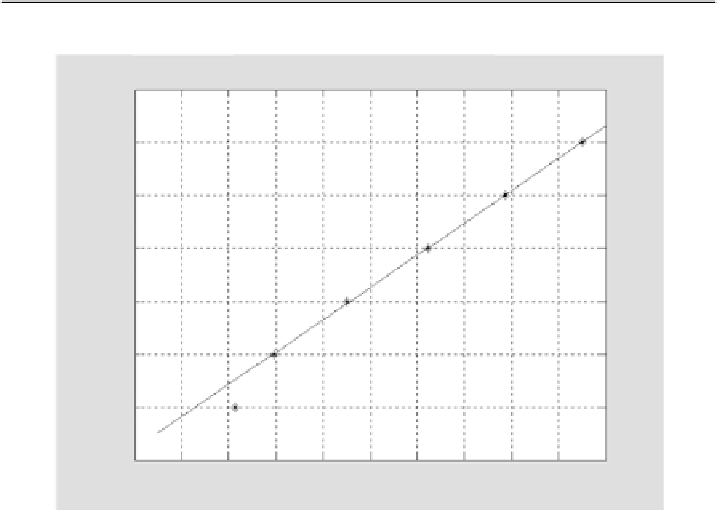Global Positioning System Reference
In-Depth Information
obtained from this value. For example, when
J/S
100 dB, 15 bits produces
S
/
N
of 13.43 dB, and 16 produces
S
/
N
of 14.20 dB. Using a linear relation
between these two points (
x
=
14
.
20), 15.74
bits will produce
S
/
N
of 14 dB. Similarly, other points are obtained, and a total
of six data points are obtained, as listed in Table 12.6, with different
J
/
S
.
It is desirable to plot the number of bits versus the
J
/
S
value in Table 12.6.
When the number of bits is small, the nonlinear effect of the ADC will occur,
which will distort the input waveform. Then, the energy of the cw jamming signal
may spread into other frequency bins. The jamming signal cannot be removed
effectively. This effect will degrade the output
S
/
N
. In addition, when the ADC
bit number is getting smaller, the sensitivity of the receiver may degrade slightly,
as discussed in Section 6.12. Because of these effects, even at a lower
J
/
S
value,
a relatively higher number of bits is needed than the expected value. Thus, the
last data in this table are not used for the curve fitting.
Using only the first five points in Table 12.6, to draw a line through linear
least square fit, the results are shown in Figure 12.24. Note that according to this
curve, when the
J
/
S
is 20 dB, an ADC with approximately 2.6 bits is adequate.
As discussed above, the actual required number of bits is 4.25 in order to produce
an output
S/N
of 14 dB. Since only the high
J
/
S
cases are of interest, the curve
=
15,
y
=
13
.
43 and
x
=
16,
y
=
TABLE 12.6 J/S versus Number of Bits with Output S
/
N
=
14 dB
J
/
S
in dB
120
100
80
60
40
20
Number of bits
18.99
15.74
12.47
8.99
5.93
4.25
Number of bits versus jsr
140
120
100
80
60
40
20
0
0
2
4
6
8
10
12
14
16
18
20
Numbers of bits
FIGURE 12.24
J
/
S
versus number of ADC bits.


Search WWH ::

Custom Search